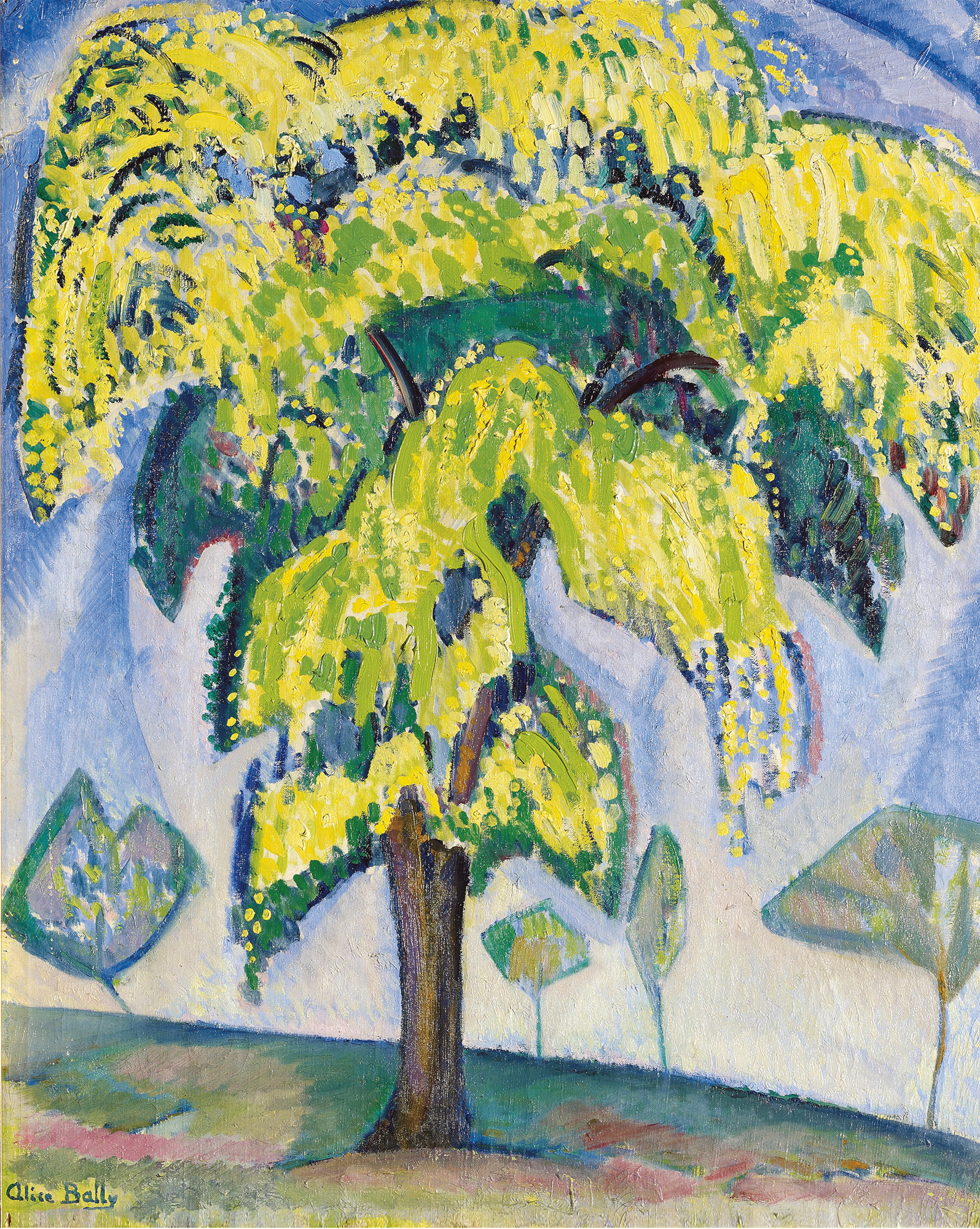Alice Bailly is born in Geneva in 1872. She settles in Paris in 1906, looking to forge a personal approach by working in a range of directions, all of them at the forefront of contemporary trends, from fauvism to cubism to futurism. Her talent is immediately recognised and the works she submits to the Parisian Salons in 1912 are enthusiastically hailed by Guillaume Apollinaire. She mounts her first solo show the following year. Although close to the avant-garde movements of the day, Bailly nevertheless stands apart thanks to a style that is both singular and whimsical.
Between 1917 and 1923, for example, she produces her famous “wool paintings” (made up of multicolour threads arranged in parallel lines on the canvas), which are no less important than her painted works. As a woman, Bailly asserts that “art is not a matter of skirt or trousers”, yet she studied at the École des demoiselles, or School for Young Ladies, in Geneva, not at the Fine Arts School, which was closed to women at the time.
The outbreak of the war catches her in Switzerland and she enjoys the hospitality of many friends and patrons in Bern, Geneva, Solothurn, Zurich and Winterthur. Her close friends include the patron Werner Reinhart, the painter Cuno Amiet, the writers Charles Ferdinand Ramuz, Albert Rheinwald, Henry Spiess and Rainer Maria Rilke, the composers Arthur Honegger and Igor Stravinsky, and the conductor Ernest Ansermet. At the end of her life, she gradually abandons cubo-futurism and returns to more classic figuration. In 1936, two years before her death, Lausanne commissions her to do an important decorative work (La Forêt enchantée (The Enchanted Forest) and Entracte) for the entrance to the city theatre.
Between 1917 and 1923, for example, she produces her famous “wool paintings” (made up of multicolour threads arranged in parallel lines on the canvas), which are no less important than her painted works. As a woman, Bailly asserts that “art is not a matter of skirt or trousers”, yet she studied at the École des demoiselles, or School for Young Ladies, in Geneva, not at the Fine Arts School, which was closed to women at the time.
The outbreak of the war catches her in Switzerland and she enjoys the hospitality of many friends and patrons in Bern, Geneva, Solothurn, Zurich and Winterthur. Her close friends include the patron Werner Reinhart, the painter Cuno Amiet, the writers Charles Ferdinand Ramuz, Albert Rheinwald, Henry Spiess and Rainer Maria Rilke, the composers Arthur Honegger and Igor Stravinsky, and the conductor Ernest Ansermet. At the end of her life, she gradually abandons cubo-futurism and returns to more classic figuration. In 1936, two years before her death, Lausanne commissions her to do an important decorative work (La Forêt enchantée (The Enchanted Forest) and Entracte) for the entrance to the city theatre.



